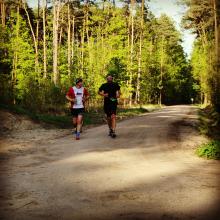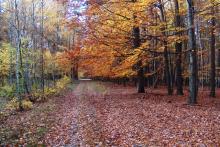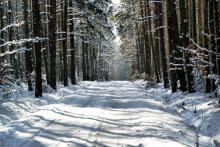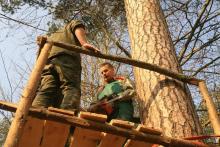 Asset Publisher
Asset Publisher
Polish forests
Poland is in the European lead, while concerning the area of all forests. They cover about 29,2 % of the country territory, and grow within the area of 9,1 million hectares. The overwhelming majority of the forests is state owned, of which almost 7,6 million hectares are managed by the State Forests National Forest Holding..
The number of Polish forest is still growing. The forestation rate of the country has increased from 21 % in 1945 to 29,2 % at the moment. Between 1995 and 2008, the forest area increased by 310 thousand ha. The basis for afforestation works is the "National Programme for Increasing the Forest Cover" (KPZL), assuming an increase of the forestation rate up to 30 % by 2020 and up to 33 % by 2050. Polish forests abound in flora, fauna and fungi. 65 % of the total number of animal species live there.
The forests grow in our country on poor soils, mainly because of the development of the agriculture in previous years. It influences the distribution of the types of the forest sites in Poland. Over 55 % of the forest areas is covered with coniferous forests. In other areas, there are forest sites, mainly the mixed ones. Their small part constitute alder and riparian forests – not more than 3 %.
In the years 1945 – 2011 the area of natural deciduous tree stands within the area of the State Forests National Forest Holding increased from 13 to 28,2 %.
Within the lowlands and uplands the most often occurring tee species is pine. It covers 64,3 % of the forest area of the State Forests National Forest Holding and 57,7 % of private and commune forests. In the mountains the predominant species is European spruce ( in the west) and European spruce with beech (in the east). Domination of pine is the result of carrying on sustainable forest management in the past. Once, the monocultures (crops or cultivations of one species) were the answer to the great demand of industry for wood. Such forests appeared to be quite fragile to climatic factors. They also were often the prey of pests' expansion.
In Polish forests, the share of other tree species, especially deciduous trees have been systematically increasing. The foresters have stepped aside from monocultures – that is why, they try to fit specific species of the forest stand to the natural stand, that would be proper for the given area. Thanks to that, in the years 1945 – 2011, the area of the deciduous tree stands within the lands of the State Forests National Forest Holding increased from 13 to 28,2 %. There occur more and more frequently the following tree species: oaks, ashes, maples, sycamore maples, elms, but also birches, beeches, alders, poplars, hornbeams, aspens, tilias and willows.
Our forests are the most often represented by the forest stands aged 40 to 80 years. The average age of the forest equals 60 years. More and more trees are of big size at the age over 80 years. Since the end of the Second World War, the forests' area has increased up to almost 1,85 million hectares.
Raport o stanie lasów w Polsce 2012
 Asset Publisher
Asset Publisher
OGLĄDAJ BOCIANY CZARNE ONLINE
OGLĄDAJ BOCIANY CZARNE ONLINE
 7 kwietnia 2020 - bociania para pojawiła się na gnieździe na dębie i nie traciła czasu
7 kwietnia 2020 - bociania para pojawiła się na gnieździe na dębie i nie traciła czasu
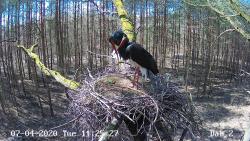 7.04.2020 r. Bociany Czarne Online
7.04.2020 r. Bociany Czarne Online
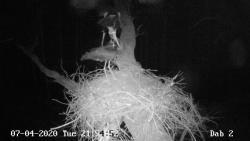 7/8 kwietnia 2020 r. - pierwsza noc bocianów na gnieździe
7/8 kwietnia 2020 r. - pierwsza noc bocianów na gnieździe
Projekt Bociany Czarne Online realizowany na terenie Regionalnej Dyrekcji Lasów Państwowych w Łodzi ma widzów, którzy śledzą losy bocianich rodzin od pierwszego odcinka w 2016 roku – wierzymy, że kolejny sezon naszego serialu będzie cieszył się równie dużą oglądalnością! Jak zawsze transmisję dla widzów zaczynamy w chwili, gdy na gnieździe pojawili się nasi główni bohaterowie.
7 kwietnia 2020 r. w gnieździe, które nazwiemy na potrzeby projektu „Dąb 2” pojawiła się para bocianów czarnych. Nie wiemy jaka jest historia tych ptaków, bo nie mają obrączek, ale wygląda na to, że ptaki znają się dobrze, znają gniazdo i jego otoczenie. Zapewne jest to para, która gnieździła się w tutaj w roku 2019. Po przylocie bociany już kopulowały, oba ptaki nocowały na gnieździe. Opiekun merytoryczny projektu, prof. Zieliński ocenia, że na gniazdo „Dąb 1” bociany też przylecą, ale mają opóźnienie i do lęgu może nie dojść.
WŁĄCZ NATURĘ ONLINE
- Oglądaj bezpośrednio w Serwisie Youtube: https://youtu.be/nW5BsJfORUc
- Zapraszamy na stronę transmisji: www.lodz.lasy.gov.pl/bocianyczarne – znajdziecie tam bociany na żywo, aktualne podsumowanie projektu i wiele ciekawostek o bocianach, które będziemy wspólnie obserwować.
- Fascynujący, cenny pod względem naukowym i edukacyjnym, materiał z obserwacji gniazd, na bieżąco będzie zamieszczany na profilu RDLP w Łodzi w Serwisie Facebook: www.facebook.com/LasyPanstwoweLodz/
- Promujcie naturę z nami – podajcie dalej wideozapowiedź naszego serialu nadawanego prosto z gniazda, by dołączyli do nas inni pasjonaci przyrody.
BARDZIEJ NA CZASIE NASZ PROJEKT NIE BYŁ NIGDY!
#zostańwdomu #bocianyczarneonline2020
Konsultantem naukowym i opiekunem merytorycznym projektu jest prof. Piotr Zieliński, pracownik Uniwersytetu Łódzkiego. Projekt powstał i realizowany jest dzięki finansowemu wsparciu Centrum Informacyjnego Lasów Państwowych. W 2020 roku lokalizatory GPS-GSM, dzięki którym możemy obserwować losy naszych ulubieńców po opuszczeniu gniazda, finansowane są z funduszy WFOŚiGW w Łodzi.


 fot. Paweł Fabijański
fot. Paweł Fabijański
 fot. Paweł Fabijański
fot. Paweł Fabijański
 fot. Paweł Fabijański
fot. Paweł Fabijański

